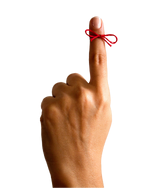Dans le but de favoriser l’intégration des douze dimensions de la compétence numérique aux activités pédagogiques, l’équipe de l’École en réseau (ÉER), en collaboration avec le Bureau de mise en œuvre du Plan d’action numérique (BMOPAN), développe des parcours numériques.
« Ces parcours sont une occasion d’opérationnaliser le développement de chacune des dimensions par les élèves. Il s’agit de structurer les activités en ce sens et de nommer explicitement la présence de chacune d’elles », indique Sophie Nadeau-Tremblay, coordonnatrice de l’équipe d’enseignant(e)s ressources à l’ÉER.
Les deux premiers parcours disponibles ont été présentés à l’occasion de la Session de transfert de l’ÉER, qui s’est tenue le 23 septembre dernier. Ils s’appuient sur des séquences d’activités déjà vécues au sein de l’ÉER. Des robots et des contes est une activité de programmation, tandis que Les mystères des bourgeons traite davantage de sciences et de mathématiques. Pour chaque parcours, des dimensions principales et secondaires sont identifiées. Ils s’adressent à tous les élèves du primaire.
Le gabarit de planification d’activités pédagogiques intégrant la compétence numérique proposé par le ministère de l’Éducation a été utilisé pour structurer les activités. Celui-ci est d’ailleurs disponible en ligne pour tous.
Les deux parcours seront officiellement offerts aux écoles en réseau au cours de l’année scolaire. Ils ont d’ailleurs été conçus spécifiquement pour être vécus ainsi. D’autres parcours seront aussi offerts plus tard au cours de l’automne et de l’hiver.
Connaître et développer la (sa) compétence numérique
Par ailleurs, Manon Légaré et Patrick Hould, du BMOPAN, ont profité de leur présence au dévoilement des deux parcours numériques pour présenter à nouveau les objectifs du Plan d’action numérique en éducation, lancé en 2018. Ils ont rappelé que celui-ci vise à :
1. Soutenir le développement des compétences numériques des jeunes et des adultes;
2. Exploiter le numérique comme vecteur de valeur ajoutée dans les pratiques d’enseignement et d’apprentissage;
3. Créer un environnement propice au déploiement du numérique dans l’ensemble du système éducatif.
Le cadre de référence de la compétence numérique, qui a été publié quelques mois après le lancement du plan d’action numérique, vise à définir les différentes dimensions. Il offre un portrait global des habiletés numériques à acquérir.
De son côté, le référentiel de compétences professionnelles de la profession enseignante a été mis à jour en 2020 et comprend désormais une compétence transversale : mobiliser le numérique.
M. Hould a rappelé que plusieurs organismes offrent de l’accompagnement et des formations aux enseignants qui désirent mieux s’approprier la compétence numérique, comme le RÉCIT et son Campus d’autoformation, CADRE21 et l’École branchée.
Ils ont également donné aux participants une foule de liens utiles pour mieux s’approprier le PAN. Au bénéfice de tous, nous les reproduisons ici :
· Plan d’action numérique en éducation
· Cadre de référence de la compétence numérique
· Affiche du Cadre de référence de la compétence numérique
· Guide pédagogique du Cadre de référence de la compétence numérique
· Continuum de développement de la compétence numérique
· Gabarit de planification d’activités pédagogiques intégrant la compétence numérique
· Plateforme de développement de la compétence numérique
· Référentiel de compétences professionnelles de la profession enseignante




 Recevez l'Info #DevProf et l'Hebdo pour ne rien manquer des nouveautés de l'École branchée!
Recevez l'Info #DevProf et l'Hebdo pour ne rien manquer des nouveautés de l'École branchée!




